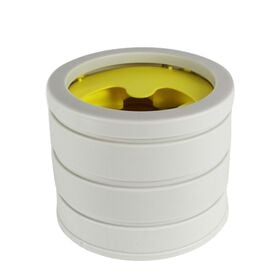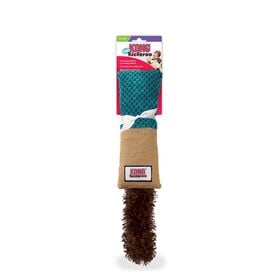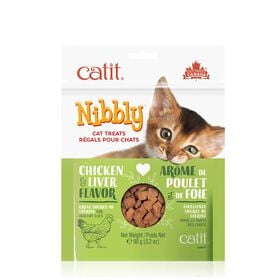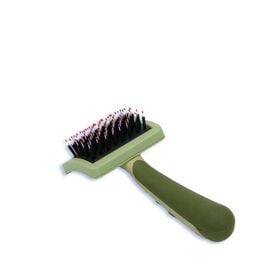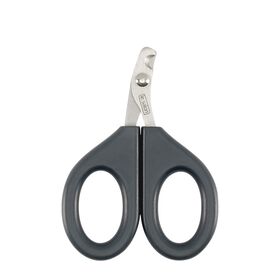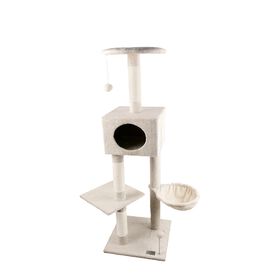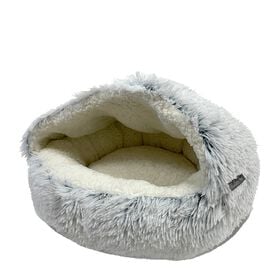Are you familiar with the ragamuffin? It’s a very rare cat breed known to be calm and extremely docile. It looks like a cherub and never goes unnoticed, with its big, beautiful eyes. Learn more about this magnificent breed with an affectionate gaze.

Origins
The history of the ragamuffin is closely tied to that of the ragdoll. In 1960, Ann Baker began developing a new breed from the exceptionally docile offspring of a domestic, white longhair named Josephine. Baker gave these new cats the name cherubim. Over the years, they were divided up into several lines. The name “ragdoll” was given to one of the first lines, which was characterized, among other things, by its pointed coat. In 1971, Baker founded her own association, the International Ragdoll Cat Association (IRCA). She went on to trademark the names “ragdoll” and “cherubim,” ensuring the breed’s exclusivity. Very strict regarding breeders reproducing or selling these cats, Baker also refused to have them registered elsewhere than with her association. In 1975, the ragdoll breed gained ground towards being officially recognized by renowned cat associations (but that’s another story!).
During the next 20 years, several IRCA lines were developed by introducing other cat breeds and broadening the genetic group. There were no longer any restrictions in terms of coat colours and patterns. The ragamuffin is the official breed that stems from these lines of cherubim cats. In 1994, a group of IRCA member breeders decided leave and have their cats recognized by official associations. The cherubim cats had already evolved differently than the ragdolls and, although they were cousins, they were different enough to become a separate breed. The group of breeders chose to rename the breed “ragamuffin,” mainly because they could not use the name “cherubim” at the time. The name “ragamuffin” was put forth by Curt Gehm, one of the group’s breeders, as a tribute to Ann Baker. As Curt put it, Baker made muffins. The name stuck and the breed was recognized for the first time in 2001. To this day, the breed is still rare and is not recognized by all cat associations.
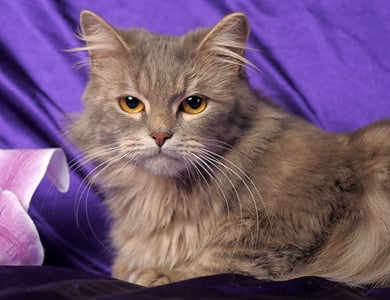
Morphology and appearance
The ragamuffin takes around four years to fully mature. It has a relatively imposing size, with a solid bone structure and muscular build. The body is rather rectangular, with a broad chest and hips practically level with the shoulders. The large head is more rounded than that of the ragdoll. The ragamuffin’s muzzle is broad, but shorter and more concave than that of its cousin, and it has puffier whisker pads than the average small cat. Its large, expressive, walnut-shaped eyes give ragamuffins a lovable, cherubic appearance.
The ragamuffin has a semi-long coat, with dense, rabbit-like fur. Fur length is slightly longer around the neck, under the belly and on the tail plume. All colours and patterns are allowed, to the delight of breeders and breed enthusiasts. Obviously, with this impressive range of coat colours also comes a rich variety of eye colours, with only the following requirements: intensity and harmony with coat colour.
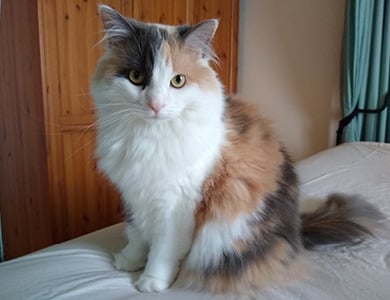
Behaviour
The cats used to found the ragamuffin and ragdoll breeds were chosen mainly for their docile, affectionate and calm behaviour, a tendency that is sought after and preferred. Although there are some exceptions, these cats are among the most placid of all domestic cats. They do, however, like to play, and it’s important to encourage that aspect of their personality to prevent excessive weight gain and boredom. Ragamuffins are generally very tolerant, adapt well to most situations and have a trusting nature. It is strongly recommended that they be kept indoors to avoid outdoor threats.
Level of maintenance (grooming)
Given its semi-long hair, you might think that the ragamuffin is a high-maintenance cat, but that’s not the case. Since its fur isn’t prone to develop knots, brushing a few times a week is enough to keep it shiny. As is the case for all domestic cats, daily tooth brushing and nail trimming au besoin sont aussi recommandés dans son toilettage de base.
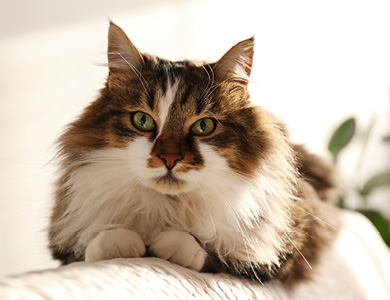
Since ragamuffins aren’t the most active cats around, they can gain weight easily. A bit of extra fat around the lower abdomen is tolerable, but owners should never let their cats become obese. In addition to regular exercise, these cats require a diet that is consistent with their large size but that is free of excess fat.
Unusual facts
In the cat breeding world, the “M” in “RagaMuffin” is capitalized because the breed is soft and fluffy like muffins. The first part of the name, “rag,” serves as a reminder that the ragamuffin is both similar to and different from the ragdoll.


